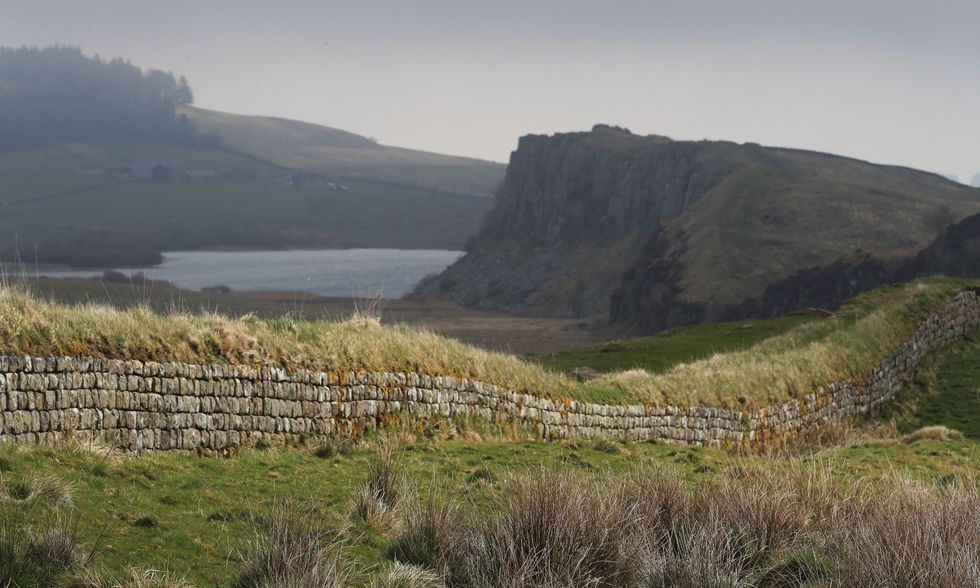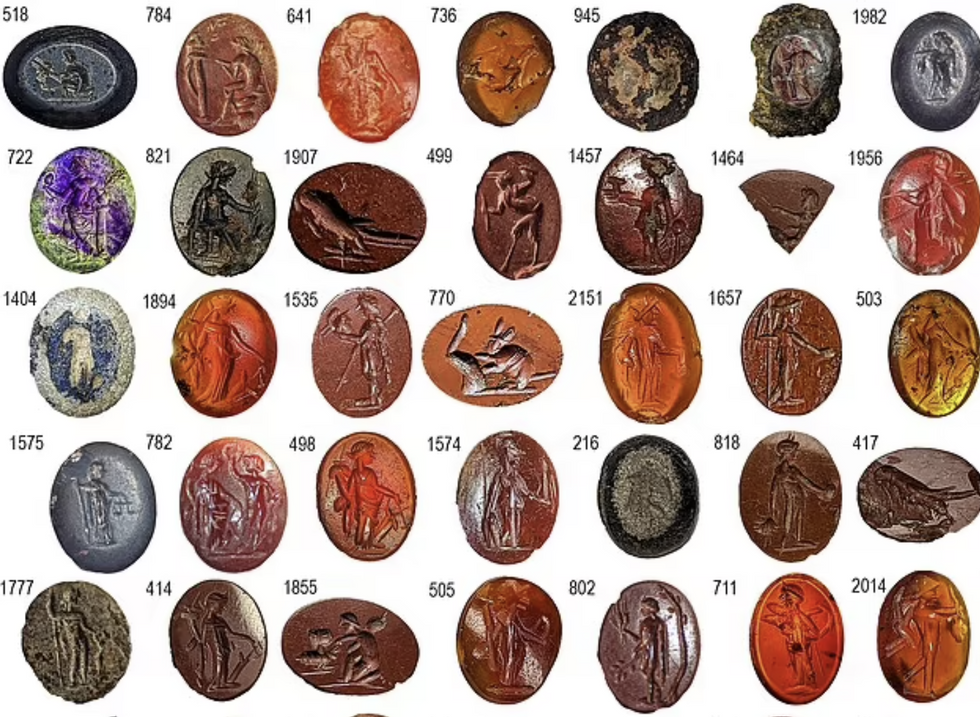Archaeology breakthrough as diggers unearth 1,800-year-old Roman carved head near Hadrian's Wall
The carved head of Roman countryside god Silvanus has been unveiled alongside five other significant finds from the site
Don't Miss
Most Read
Latest
Archaeologists have uncovered a millennia-old Roman carved head near Hadrian's Wall.
The 1,800-year-old discovery - a carved head of countryside god Silvanus - was accompanied by a multitude of unique finds from the early third century, including a meticulously crafted ring with an inset gem depicting a rat munching merrily on a poppy seed.
Leading Roman expert Frank Giecco, head of the historical operation, said that these have "literally just come out the ground", speaking to MailOnline.
Giecco, alongside his team, has already made five significant finds from the archaeological site.

Giecco and his team has already unearthed five significant finds from the archaeological site near the historic wall
|PA
The find was uncovered a stone's throw from Hadrian's Wall in an ancient bath house under Carlisle Cricket Club.
However, other finds from Giecco and his team include a collection of rare coins, as well as around 70 semi-precious gems, which had been recovered from a bathroom drain - almost two thousand years after its last use.
The team had also found multiple "intaglios" - pieces of precious and semi-precious jewellery, worn by men and women to signal their wealth and status in society.
To keep the gem in place, the Romans would use an adhesive extracted from vegetables, which would usually dissolve in warm water and cause the gem to end up down the drain, much to their owners' disappointment.
LATEST ARCHAEOLOGICAL FINDS:

The find was uncovered a stone's throw from Hadrian's Wall in an ancient bath house under Carlisle Cricket Club
|ARCHITECTS PLUS
Alongside these personal items, the team has excavated over 30 gaming counters, reflecting the Romans' love for board games, as well as a multitude of hairpins and needles, sentenced to two millennia down the drain.
Speaking in more detail about their newest find, Roman art professor at the University of Oxford Professor Martin Henig said: "The style of cutting... is distinctive and it can be ascribed to the gem workshop based at Carlisle.
"Most of the gems from that workshop are opaque red jasper, but this is translucent golden carnelian and really glows.
"It shows Silvanus, god of the woodland and wild places - not all that common in Roman Britain - but there was a temple at Bewcastle dedicated to a local version of the god, Cocidius.
'"And, in fact, there is a gem of the Carlisle school found far to the east at South Shield showing Silvanus Cocidius as a huntsman. Our Silvanus also has a dog, but his main activity is as a woodcutter and pruner.

Other finds from Giecco and his team include a collection of rare coins, as well as around 70 semi-precious gems, which had been recovered from a bathroom drain, nearing two thousand years after their last use
|ANNA GIECCO/INSTAGRAM
"In one hand he holds a bushy branch carved with thick strokes of the drill; in the other a sickle… The most refined cutting is displayed in his hair and hairband. I feel the gem cutter would have felt especially satisfied by this lovely and distinctive gem, which presumably dates like other gems from the workshop to the early third century AD."
Giecco's team will continue to excavate the area, as they have discovered two platforms in a square area - believed to be the site of ritual activities, while others have suggested that it used to be a mausoleum.
The team leader shared that the team has just unveiled "masses of beautifully-decorated" pottery and tableware from the era, such as bowls illustrated with Venus and Cupid, as well as a coin with the image of Emperor Hadrian.
Unable to contain his excitement over the discoveries, he said: "The site never fails to amaze me."










